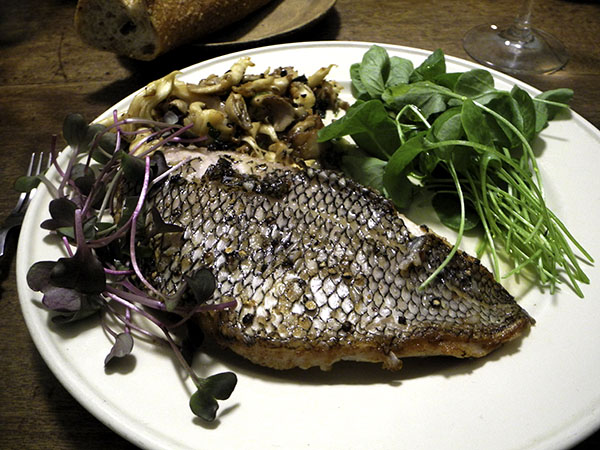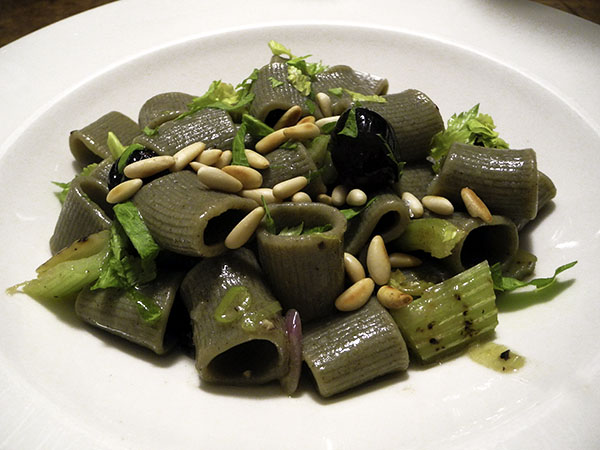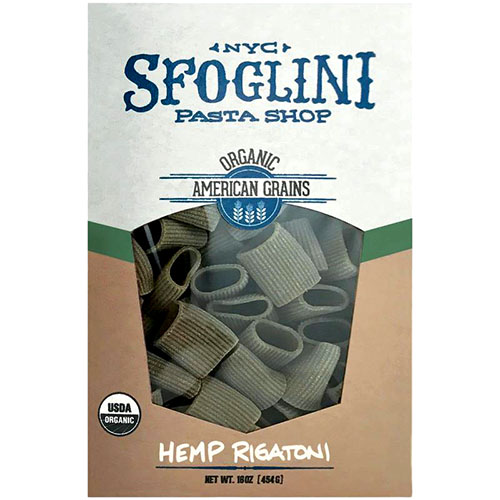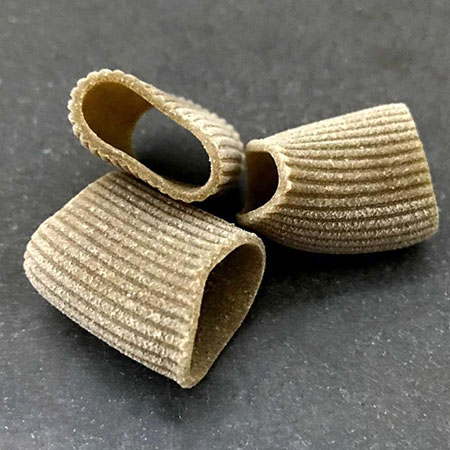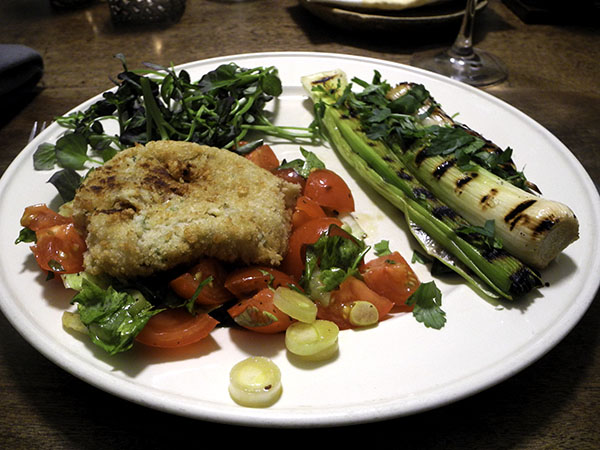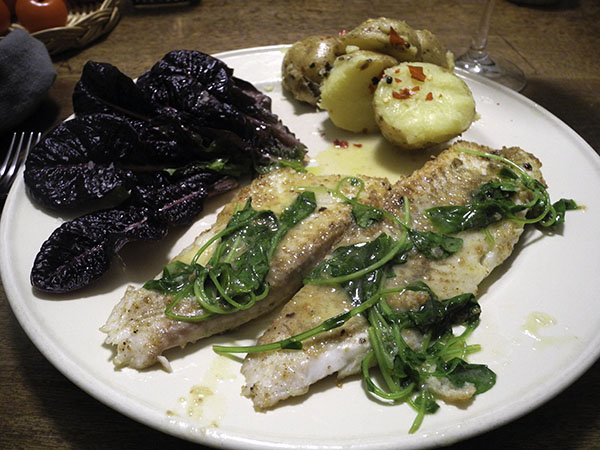
Every once in a while I have to be reminded of just how good a piece of sole can be, or any other mild flat fish for that matter. On Friday it was Pura Vida Seafood Paul Mendelsohn’s turn: I often ask a fish seller what I should buy that day, mostly because I’ve almost always cooked every kind of seafood in the selection I’m looking at, and it’s good to be pointed to something that someone who knows her or his catch might feel especially good about.
This time it was lemon sole, and it turned out to be fantastic!
- two small lemon sole fillets (a total of 15 ounces) from Pura Vida Seafood, dried thoroughly, salted on both sides (I also sprinkled a little freshly-ground black pepper on them this time) and brushed with a little good Italian white wine vinegar (Aceto Cesare Bianco white wine vinegar from Buon Italia), coated with a thin layer of a local whole wheat flour from the Blew family of Oak Grove Mills in the Union Square Greenmarket, and sautéed over a medium-high flame inside a very heavy vintage oval tin-lined copper pan in 2 or 3 tablespoons of olive oil, for a couple minutes, turned and cooked for another minute or so (the exact time, or even an approximate time will always depend on the thickness of the fish and the heat of the pan), the fillets removed and the pan wiped with a paper towel, 2 tablespoons of rich Organic Valley ‘Cultured Pasture Butter’, 3 tablespoons of juice from an organic Whole Foods Market lemon, and a loose handful of hydroponic upland cress (sold live, with roots in water) from Two Guys from Woodbridge, everything warmed for a minute or so, either over a low flame or none at all, the sauce then drizzled onto the sole
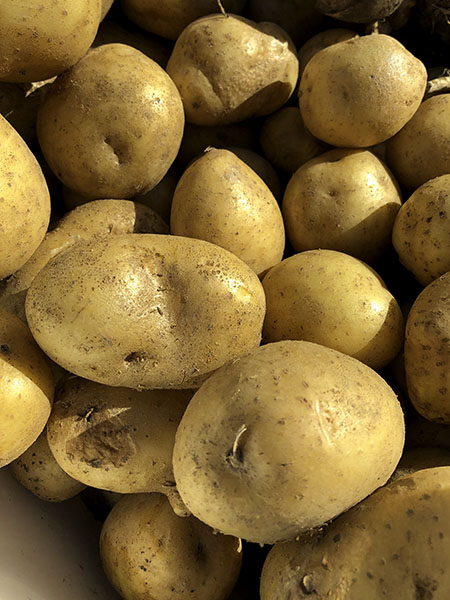
- 5 medium size Kennebec potatoes (15 ounces) from Windfall Farms, scrubbed, boiled unpeeled in heavily-salted water until barely cooked through, drained, halved, dried in the still-warm vintage Corning Pyrex Flameware blue-glass pot in which they had cooked, tossed with a little more than a tablespoon of butter, sprinkled with salt and pepper, garnished with crumbled dried red shishito peppers (not hot, but tasty and very colorful for the plate) from Lani’s Farm
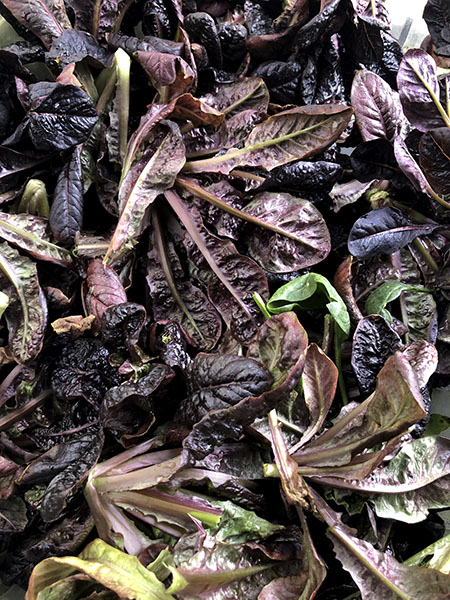
- the delicious separated leaves from 2 small beautiful purple Rosaine bibb lettuce plants from Norwich Meadows Farm, drizzled with what I am currently using both in cooking and in finishing, Trader Joe’s Italian Reserve extra virgin olive oil (unfiltered, unrefined, and cold pressed)
- the wine was a brilliant Greek (Peloponnese) white, Tetramythos Muscat Sec 2015, from Copake Wine Works
- the music was Vivaldi’s 1727 dramma per musica, ‘Orlando Furioso’, Jean-Christophe Spinosi conducting the Ensemble Matheus and Les Elements Chamber Choir

